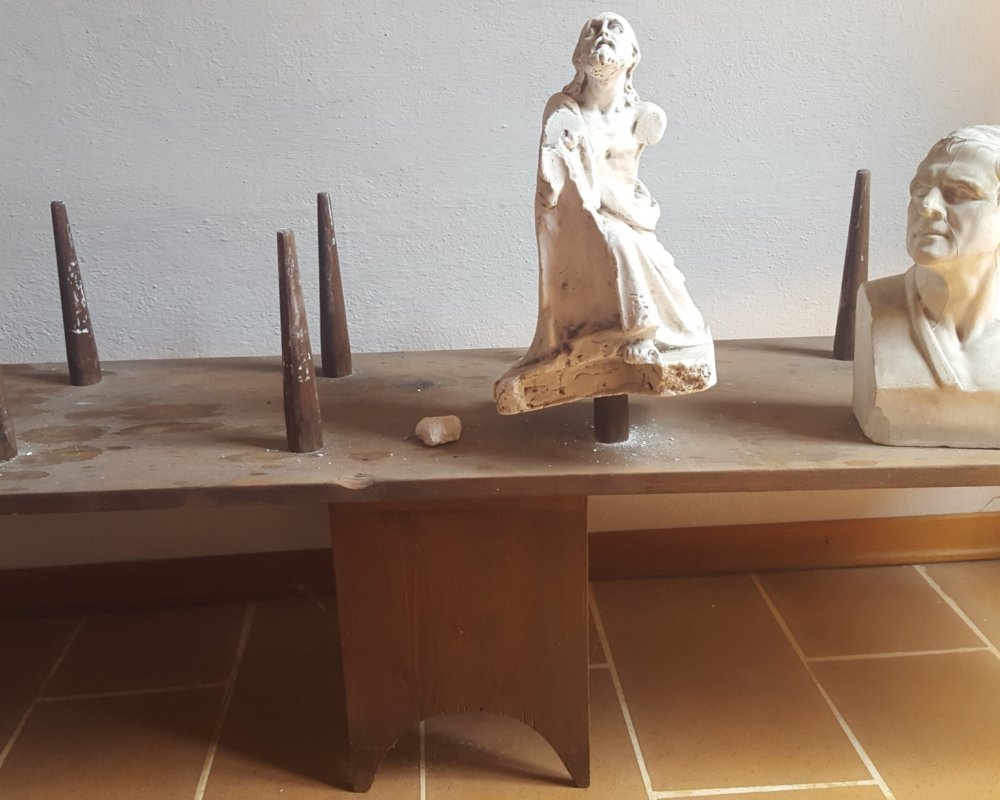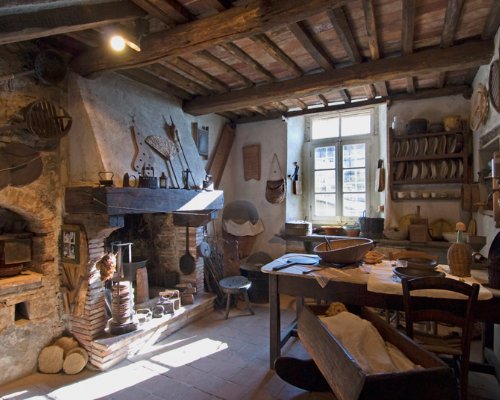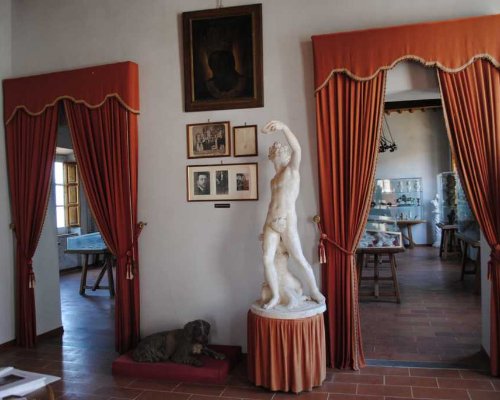Among the beauty of the chestnut groves all the way to San Pellegrino in Alpe
Leaving Lucca behind, the walled-city famous for Buccellato cake, we immerse ourselves in the authentic nature of Garfagnana, an enchanting territory, enclosed between the Apuan Alps and the Tuscan-Emilian Apennines and crossed by the Serchio river.
In this territory, rich in history and natural beauties to be discovered, there are also popular traditions to know and typical products to taste. With this off the beaten track itinerary in four stages, through less-traveled paths and lesser-known villages, we visit three museums and take a pause in the greenery of a park.
Following the Serchio river, from the outskirts of Lucca towards the Garfagnana, the itinerary climbs up until it reaches the first chestnut woods, documented in this area since the early Middle Ages. To learn more about this area and discover the unique traditions of the territory, is recommended to visit the Museo del Castagno di Colognora di Pescaglia. Here are preserved objects that allow to learn more about the processing and use of chestnut, and it's possible to follow a path that leads up to a metato, the traditional chestnut drying room.
Following the Serchio river, from the outskirts of Lucca towards the Garfagnana, the itinerary climbs up until it reaches the first chestnut woods, documented in this area since the early Middle Ages. To learn more about this area and discover the unique traditions of the territory, is recommended to visit the Museo del Castagno di Colognora di Pescaglia. Here are preserved objects that allow to learn more about the processing and use of chestnut, and it's possible to follow a path that leads up to a metato, the traditional chestnut drying room.
The Garfagnana was never a lucrative area with respect to agriculture and crops, due to the low quality of its soil and to the way in which lands were parcelled, in such a way that made it difficult for larger families to support themselves, thus pushing them to emigrate. This important socio-economic trend, which continued until the XVII century, is documented in the Museo della Figurina di Gesso e dell'Emigrazione in Coreglia Antelminelli. The museum holds a vast collection of chalk figurines, created by many emigrants created for their livelihood when they moved abroad.
The Garfagnana was never a lucrative area with respect to agriculture and crops, due to the low quality of its soil and to the way in which lands were parcelled, in such a way that made it difficult for larger families to support themselves, thus pushing them to emigrate. This important socio-economic trend, which continued until the XVII century, is documented in the Museo della Figurina di Gesso e dell'Emigrazione in Coreglia Antelminelli. The museum holds a vast collection of chalk figurines, created by many emigrants created for their livelihood when they moved abroad.
Along the Apennine mountain chain, rich in flora and fauna, visitors can partake in interesting excursions and pay visits to the education centers that are scattered throughout these mountains. In Colle Fobia, near Barga, and in San Romano Garfagnana, seat of the Centro Visitatori of the Parco dell'Orecchiella, there are two locations educational structures designed to illustrate the natural environment of the Garfagnana. In the 60,000-hectare park, on the mountainside, visitors can walk for days on end among the woods comprised of chestnut, hornbeam, bitter oak, birch and beech wood trees. Footpaths are marled by the Mountain Community, which has also put together a ten-stage itinerary called Garfagnana Trekking.
Along the Apennine mountain chain, rich in flora and fauna, visitors can partake in interesting excursions and pay visits to the education centers that are scattered throughout these mountains. In Colle Fobia, near Barga, and in San Romano Garfagnana, seat of the Centro Visitatori of the Parco dell'Orecchiella, there are two locations educational structures designed to illustrate the natural environment of the Garfagnana. In the 60,000-hectare park, on the mountainside, visitors can walk for days on end among the woods comprised of chestnut, hornbeam, bitter oak, birch and beech wood trees. Footpaths are marled by the Mountain Community, which has also put together a ten-stage itinerary called Garfagnana Trekking.
In San Pellegrino in Alpe, visitors can make a stop at the Museo Etnografico Don Luigi Pellegrini, which collects testimonies relevant to the rural communities of the Tuscan-Emilian Apennines: agricultural, pastoral and artisan tools, furniture, and household furnishings.
From San Pellegrino, on clear days, it is possible to get a complete view of the mountains from Garfagana to the Apuan Alps, and, turning north, it is possible to identify all the peaks of the Emilian Apennines.
In San Pellegrino in Alpe, visitors can make a stop at the Museo Etnografico Don Luigi Pellegrini, which collects testimonies relevant to the rural communities of the Tuscan-Emilian Apennines: agricultural, pastoral and artisan tools, furniture, and household furnishings.
From San Pellegrino, on clear days, it is possible to get a complete view of the mountains from Garfagana to the Apuan Alps, and, turning north, it is possible to identify all the peaks of the Emilian Apennines.


